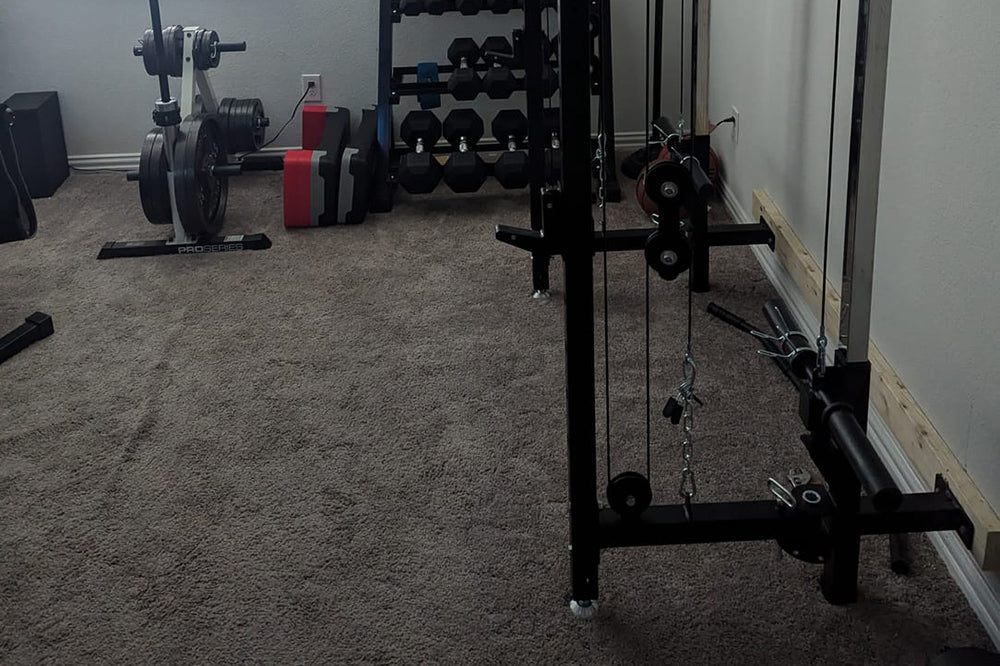When installing half racks, ensuring both stability and wall safety is crucial. Three key points—wall thickness, expansion bolt length, and the potential use of wooden panels as cushioning—determine the success of the installation. A closer examination of these points will clarify the necessity of using wooden panels.
Wall Thickness and Load-Bearing Capacity
Wall thickness directly impacts its ability to bear weight. Thick walls offer strong support, minimizing deformation or damage from the rack’s weight. In such cases, additional reinforcement with wooden panels may be unnecessary.
On the contrary, thin walls have lower load-bearing capacity, making them prone to cracking or deformation under the workout strength of the half rack. Here, wooden panels can increase wall thickness, enhancing stability and ensuring a secure installation.

Choosing the Right Expansion Bolt Length
The length of the expansion bolts must correspond to the wall’s thickness to ensure effective anchoring. Bolts that are too short won’t expand fully, compromising stability, while excessively long bolts may damage the wall.
On thin walls, even with appropriately sized bolts, insufficient wall thickness may hinder proper anchoring. Wooden panels can provide additional thickness, enabling better bolt expansion and securing the half rack.
Wooden Panels as Cushioning Materials
Wooden panels can also serve as cushioning, distributing the pressure exerted by the half rack on the wall. This is particularly important for thin or older walls, where they help prevent cracks and damage by reducing concentrated loads. The natural elasticity of wood further absorbs impact forces, protecting the wall structure.
For walls that struggle to support heavy installations like half racks, wooden panels are essential, providing extra support and prolonging the structure’s lifespan.
Conclusion
Taking into account wall thickness, expansion bolt length, and the cushioning role of wooden panels, their use is often necessary, especially with thin walls. Wooden panels enhance wall thickness, improve bolt anchoring, and distribute pressure, ensuring a safe and stable installation. Ignoring these points can lead to instability and wall damage, making the thoughtful use of wooden panels a key step in ensuring long-term safety.










































Leave a comment
This site is protected by hCaptcha and the hCaptcha Privacy Policy and Terms of Service apply.